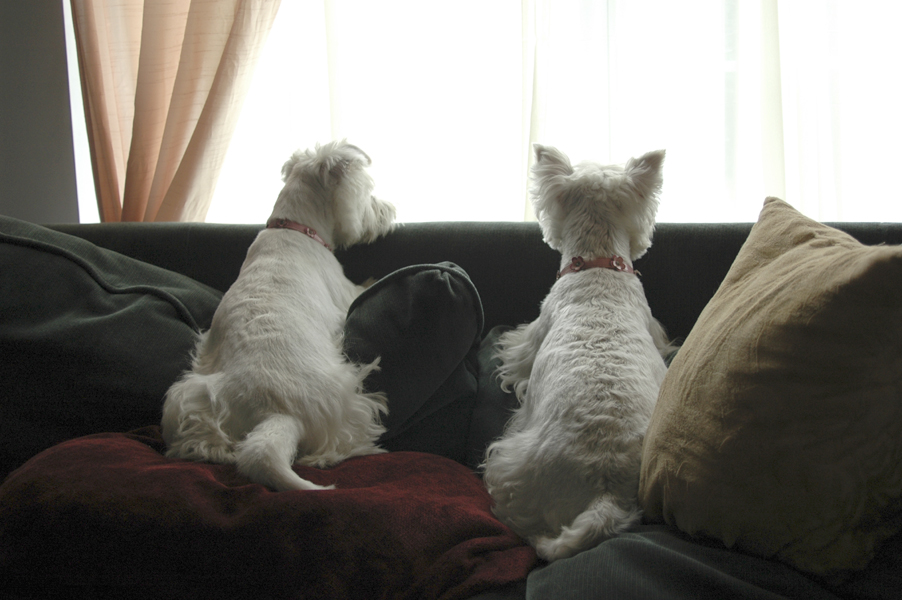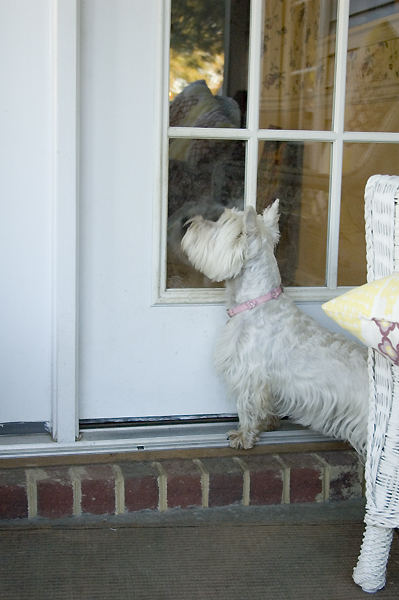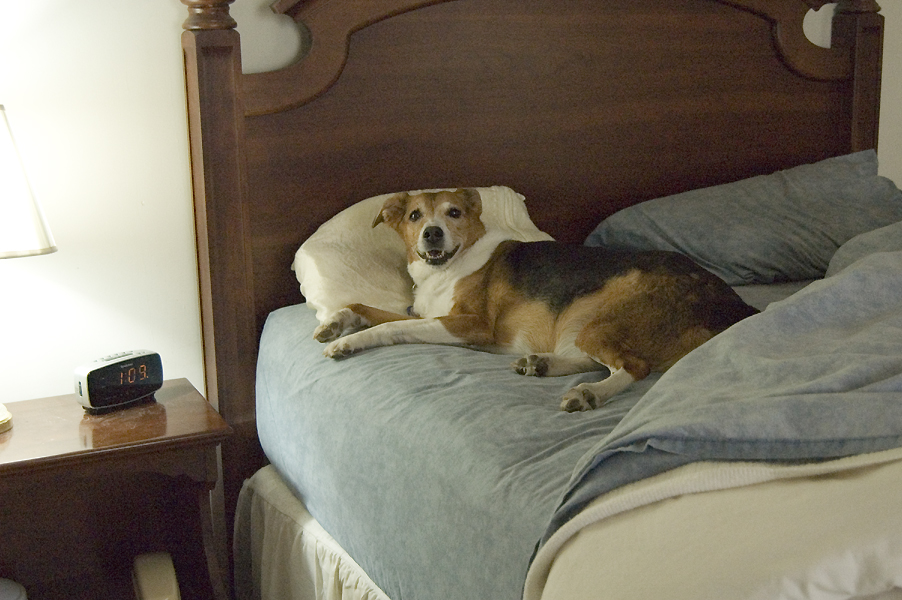|
Jennifer Mayhew is an
aspiring photography major at Some background information
to get to know Jennifer a little better to understand more about her and how
she has come to this point in her life. Jennifer
Mayhew first started her photography passion in high school at Through Longwood she has come
across many obstacles and projects that have not given her guide to the
photography that she would like to continue for her career in until spring of
2007. Her longtime professor, who likes
to push Jennifer, had given the class a phrase as the starting point of their
project. “Sometimes it’s ok to not have
a map.” This phrase was the keyhole to
open up Jennifer’s eyes as to where she wanted to take her photography. Her thought process for this phrase had
started off slow until it hit her. She
had thought about how a map develops more roads and markings throughout the
years, as a face does. Over the years,
as sad as it is, people begin do develop more wrinkles and markings. The human face has become its own map in
itself, recording this history throughout a person’s life. The recording of every time that person
laughed, or cried or was worried. The
lines of moments in time that have impacted their life are shown on the face,
just as a map does. Her photographs
became portraitures to accurately display how life has affected the face over
the years. Portraiture by definition is
the likeness of a person, especially the face, as a painting, drawing, or
photograph. She photographed people in
dramatic lighting that would show more of the history recordings on her
subjects face. She used a black backdrop
to create the setting of a documentary so that the subject is the only one that
the viewer will see. The lighting purposely
lets the viewer see the subject to almost study the wrinkles and marks. The subjects were slightly turned to create
the dramatic pose and to accent the lighting as well. This pose also created the subject to seem
almost completely revealing but just not yet.
She photographed her subjects using a medium format camera and printed
on fiber paper. She used the camera
because the quality using a larger film than thirty five millimeter is much
better for the portraits she wanted to create.
The camera was an obstacle that Jennifer had to overcome because she had
never used a medium format camera. She
was thrown off when she was ready to focus.
The viewfinder is almost like a small television but everything is
flipped. It took a little bit more
concentration and time that it would if she was using a regular thirty five
millimeter. Printing on fiber paper with
the enlarger was also chosen for this project because fiber paper brings out
more tones and just all around better quality.
Again running into challenges with the fiber paper, it took more time
with trial and error to finally achieve the “perfect” print with the best
tonalities. This project definitely
influenced Jennifer to begin to work with portrait photography. She originally wanted to travel the world and
become a National Geographic photographer, but when she saw how amazing and
affective her images were in portrait form, she knew that creating portraits
was where she wanted to go in life and her career. The middle of spring semester
of 2007, a heartbreak had occurred when she found out that her longtime friend
and companion, Fancy a beagle sheltie mix dog, had been diagnosed with an
enlarged heart caused by a heart murmur.
This enlarged heart had grown so much to the point where Fancy had hard
time breathing, even after the simplest exercise. Jennifer had realized how much Fancy meant to
her and became her influence for her senior thesis in photography. Her thesis is to capture the relationship
that is shared between a pet and owner. Jennifer had felt the connection in her
relationship with Fancy and wanted to capture that in a photograph. The word relationship by definition is an
emotional association between two people.
She knew that with her recent attraction to portraiture, she wanted to
incorporate this into her senior work.
After doing some research she had figured out that she wanted to do
environmental portraiture because she felt this style would be a better
solution for relationship and emotion to come from the image. The expression given by the subjects in her
work shows the viewer the emotion inside the soul. The animal is looking at the viewer as if
they were their owner. She did not want
to completely choreograph the animals because she felt like they would have
seemed pushed and uncomfortable. Along
with that it would have been very hard for her to successfully position her
subjects and stay for an extended amount of time. Animals are very unpredictable and extremely
hard to stay in a position long enough.
She mostly wanted to capture the truth because that is when the real
honest emotion comes out. When it is
being forced or created, the truth of the photograph turns an artificial scene. Animals can be very expressionistic with
their eyes, and gesture of their body.
The eyes are full of emotion and soul.
The body can express all kinds of emotion. For example if the animal is
laying on its back then it’s submissive and is willing to be trustworthy of who
is near. Jennifer made the choice to use
digital photography because she wanted to enlarge the image. The enlarging of the image will create a more
intimate reaction with the viewer. The viewer is supposed to come away from the
images with a small sense of companionship with the animal in the
photograph. Some may say that
photographing animals can become “cheesy” and very cliché of being cute and
cuddly. The best way to describe the
“cheesy” style is by the Hallmark cards that have the animals on the front that
have the enlarged nose and eyes to portray the happy cuddly and cute animal. The animals look almost like a cartoon
character because they are so modified.
This style of photography works for the birthday cards, or the calendars
that want to sell the cute animals.
Jennifer admits that the cute style of photography could be confused
with the style that she uses for her body of work because she does the have the
close up view with the animals. The
“cheesy” style can affect people in a very uplifting way. Jennifer says that when she looks at those
photographs she laughs because they are cute, and make her feel happy. The purpose of the style of photography is to
be cute and somewhat normal so that the viewer can relate it to an experience
they once had. For example Jennifer had
experienced, when she was living at home, her dogs would come to wake her up with
a cold wet nose in her eye. The nose
extending out to the viewer and has the appeal of being wet, just reminds her
of the mornings being woken up by her dogs.
Another example of the cute cards is when the animal has the puppy eye
look. Everyone knows the puppy eye look
and how it is associated with being in trouble or asking for sympathy. This type of photograph is obviously to
attract people, because they see those eyes and automatically feel guilty. Because of their guilt the viewer then
proceeds to read the card. The creating
of the puppy eye look is easily photographed and modified with the knowledge
and usage of Adobe Photoshop and the correct lighting. The eyes are elongated and touched up with a
tint of blue to give that sad appeal.
The design qualities of this cute style have a documentary style to it,
primarily photographed on a white sterile background so that there is nothing
else to distract the viewer. The fur has
a natural soft texture look if had not been modified. The facial expressions are modified to
portray the emotion that the photographer wants to show. This style of photographing animals does not
work for artistic purposes when photographing animals because art photography
has more thought, knowledge behind each image, not the modifications of a computer.
When it comes to art photography,
an artist is more inclined to capture the right photograph instead of trying to
fix it up or change it later. Even if it
takes hours, days, months, a true artistic photographer will use the design
qualities, lighting, and color techniques that they have learned and
experienced with over the years. Their
knowledge can take them to more places with their work than a photographer who
can do some tricks on the computer. This
is in now way shape or form meant to offend anyone but Jennifer believes that
using the computer to manipulate a photograph is an easy way out. The basic design qualities such as line,
shape, texture, lights, shadows, are all what a photographer looks for when
looking through the viewfinder before snapping the photograph. Photographers also have thought process for
their work and reasons behind the pieces.
For example for Jennifer’s work she is not just capturing a cute loving
dog, she is capturing the emotion and intense feelings through the eyes and
gestures of the animal. She has thought
long and hard about this body of work and what it is meant to have a
relationship with an animal companion and how strong it can be. The lighting that Jennifer intended on using
is mainly sunlight because along with the “truth” concept she wanted to get the
most natural lighting which is the sun.
The way that the light hits the animals, foreground, and background,
intensifies the honesty in the photograph and the subjects within. In Jennifer’s work she did consciously
construct the color scheme in the photographs because color is a big aspect
with photography. It is important
because any wrong color in a photograph can throw off the viewer and only be
able to concentrate on how the color does not mesh well. It could also cause an opposite feeling than
given by the subjects. Such as if an
animal is feeding off this very enthusiastic emotion and they are surrounded by
harsh red, which means fear or anger, could throw off the emotions coming off
of the image. Over the years a
photographer does not need to force their mind to figure out how to solve the
puzzle of knowing how to create a “perfect” photograph. The design aspects that they have learned
begin to naturally come into play with the photographer before snapping the
shot. This helps to decrease the amount
of time it takes to form that one “perfect” image. Jennifer has started to recognize the design aspects;
she has become more of a perfectionist.
She notices certain parts in a photograph that are needed or not
needed. She has become more aware of her
surroundings and learning more everyday of how certain situations can be
photographed or how she could work around it, which is another quality of an
artist photographer. They must be able
to work with different situations and make it work. Obviously by reading this, photographs taken
by artists have other qualities behind them then the cute loving animals that
someone would see on a Hallmark card.
Not to say those photographs are bad, but to say that it takes more
time, effort, and a thinking process behind a photograph that is taken by an
artist. Jennifer before and during
her process of developing her body of work she did some research of other
photographers that had also photographed animals. She wanted to know how and why they
photographed the animals in the way they did so that she could get a closer
idea of how she wanted to photograph.
The first photographer she had researched was Dan Heller. Heller is a photographer who not only photographs
animals but has traveled the world and photographed other styles of
photography. He has many landscapes,
human portraits, and animal portraits.
Jennifer would say that his style of photography that he primarily
creates is landscape considering the amount that he travels. When Jennifer looked at his photographs of
animals she did realize that he had some photographs that were “cheesy” and
then he had some that were almost poetic.
He had an image where a dog was looking at the viewer in what seemed to
be an apartment. The dog had this
expression of confusion on his face.
When Jennifer looked at this photograph her interpretation was that the
dog was confused as the why the owner was leaving him all alone, and just
wanted someone to be with. The looks in
the dog’s eyes were filled with sadness and confusion. Jennifer felt like she could just reach out
and relieve the dog of its sadness. Another
photographer that she had researched was Elliot Erwitt. Erwitt is a famous photographer who has done
mainly black and white images. Erwitt
did not just make beautiful photographs but he made an impact on the society
for photographers. He was a member of
Magnum which is a prestigious photography agency. Magnum had been started after World War II
when some photographs surfaced. This
agency is a diverse community where photographs are accepted by members and
non-members. To this day over one
million photographs are in the Magnum Library.
Magnum provides the photographs to the press, advertising, and museums
around the world. When Erwitt joined
Magnum he served as president in 1953.
During his presidency he fought for the right for photographers to
retain copyright over their own pictures.
Both Heller and Erwitt, when it comes to their photographs, are more
involved with environmental portraits, which is where Jennifer received the
idea to capture her images in a more environmental setting. Heller, judging from him work, is more about
capturing a moment in time without much choreographing but with much thought
behind his images and why he has decided to photograph what he did. Erwitt is very much into thought process and
thinking deeply into his work to successfully portray exactly what he wants to,
and his work shows it. Because these two
photographers have the same style, but semi different it was Jennifer’s
decision to experiment and find her own style that work best for her work. In conclusion, Jennifer’s
work has come a long way from experiencing a horrific time in her life to be
able to portray it though one image. The
research that she has done has helped her experiment more and more to try to
achieve that “perfect” photograph. She
has increased her artistic knowledge and experience to finish up her senior
body of work. These images and experiences
have impacted her life that no other project will. It has taught her how much
time needs to go into a project that she loves. She has learned that her
perfectionist side of her personality is not a bad thing, but good because it
has helped her to become a better artist.
This project has helped Jennifer decide where she wants to go in life
and what kind of photography that she wants to continue. She wants to open up her own photography
studio where anyone can come to her with anything. She has discovered through her college career
and majoring in art that she is very open-minded and up for any challenge. She loves to experiment with different
mediums, and not discount anything without trying it first. Fancy, which is her number one influence for
this project, is still alive today and has been inspiring Jennifer to continue
her work. This work has been dedicated
to her long time companion and friend, Fancy. “Cheesy” or Artistic? Jennifer Mayhew Art 462 |
         
|